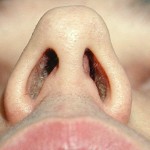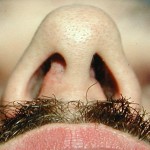Patients that seek rhinoplasty have many reasons for doing so. One of the most common and often at the near top of the list is that of the deviated nose. Since the nose is a prominent midline facial structure, its straightness or lack thereof, is fairly easily discernible. While nasal deviation is a common problem and is addressed during may rhinoplasties, it is well known to be challenging to end up with a perfectly straight nose.

In the May/June 2015 Online First issue of the JAMA Facial Plastic Surgery journal, the article entitled ‘Frequency and Characteristics of Facial Asymmetry in Patients With Deviated Noses’. The authors goal was to analyze the characteristics of facial asymmetry in patients with deviated noses. Over 150 patients who had rhinoplasty for a deviated nose over a four year period were compared to 60 rhinoplasty patients who were treated with no nasal deviation. Facial asymmetry was categorized into 4 types based on the subunit of the face involved and nasal deviations into 5 types. They found that facial asymmetry was more common in those patients who had a deviated nose versus those who didn’t. (55% vs 32%) This facial asymmetry was marked by different anthropometic measurements in distances between the midpoint of the interpupil line to the most prominent malar point, lateral canthal angle, lateral alar angle, lip margin angle, and tilted chin angle.
This paper demonstrates why deviated noses are harder to correct than one would think. People who have crooked noses are more likely to have a face whose two sides don’t quite match up either. So while the patient thinks that only their deviated nose is the issue they actually may have associated facial asymmetry as well. The nose deviation is a microform of the overall more complex facial asymmetry. Such facial asymmetry can ultimately lead to unhappiness with their rhinoplasty result because they will interpret how the nose looks in the context of the overall face appearance.
Dr. Barry Eppley
Indianapolis, Indiana



